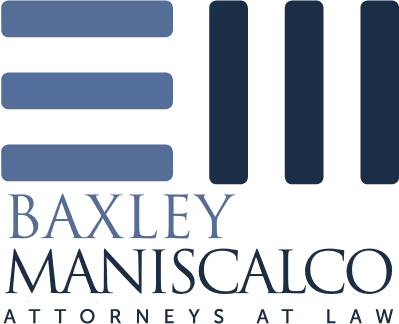
In 2022, Alabama reported over 156,000 traffic crashes, resulting in more than 37,000 injuries and 986 fatalities. These staggering numbers underscore the critical importance of understanding what happens in the aftermath of an accident.
When it comes to personal injury cases stemming from these incidents, one key player often emerges as a game-changer: the expert accident reconstructionist.
What Is an Expert Accident Reconstructionist?
An expert accident reconstructionist is a highly trained professional who uses scientific methods and advanced technology to piece together the events leading up to, during, and immediately following a vehicular accident.
These specialists combine physics, engineering principles, and forensic science to create a detailed, evidence-based account of how an accident occurred.
Accident reconstructionists don’t just rely on eyewitness accounts or police reports. They employ a variety of sophisticated tools and techniques to build a comprehensive picture of the incident.
From analyzing skid marks and vehicle damage to utilizing 3D modeling software and drone technology, these experts leave no stone unturned in their quest to uncover the truth behind an accident.
The Importance of Accident Reconstruction in Personal Injury Cases
In the complex world of personal injury litigation, solid evidence is the cornerstone of a strong case. This is where the expertise of accident reconstructionists becomes invaluable.
Their meticulous analysis and expert testimony can make the difference between a successful claim and a dismissed case.
Establishing Liability
One of the primary roles of an accident reconstructionist is to help establish liability.
By recreating the accident scene and analyzing all available evidence, these experts can provide a clear, scientific explanation of how the accident occurred and who was at fault.
This objective analysis can be particularly crucial in cases where eyewitness accounts are conflicting or unreliable.
Countering Insurance Company Tactics
Insurance companies often employ their own experts to minimize their liability in accident cases.
An independent accident reconstructionist can level the playing field, providing a credible counter-narrative to the insurance company’s version of events.
Their expert analysis can help refute unfounded claims and ensure that the victim’s side of the story is heard and understood.
Enhancing Settlement Negotiations
The detailed reports provided by accident reconstructionists can significantly strengthen a plaintiff’s position during settlement negotiations.
When presented with a comprehensive, science-based analysis of the accident, insurance companies are often more likely to offer fair settlements rather than risk going to trial.
Supporting Courtroom Testimony
If a case does go to trial, the testimony of an expert accident reconstructionist can be incredibly powerful.
These professionals are skilled at explaining complex technical concepts in ways that judges and juries can easily understand.
Their ability to create visual aids and simulations can help bring the accident to life in the courtroom, making a lasting impression on those deciding the case.
The Process of Accident Reconstruction
Understanding the process of accident reconstruction can help you appreciate the depth and breadth of expertise these professionals bring to personal injury cases.
Let’s break down the typical steps involved:
- Initial Scene Investigation: Ideally, an accident reconstructionist is called to the scene immediately after the accident. They document the scene through photographs, measurements, and detailed notes. This includes examining skid marks, debris patterns, and vehicles’ final resting positions.
- Evidence Collection: The expert gathers and preserves physical evidence from the scene, including vehicle parts, tire marks, and environmental factors that may have contributed to the accident.
- Vehicle Inspection: A thorough examination of all vehicles involved is conducted. This includes analyzing damage patterns, checking mechanical systems, and retrieving data from onboard computers or event data recorders (EDRs).
- Witness Interviews: The reconstructionist may interview witnesses to gain additional perspectives on the accident. However, they primarily rely on physical evidence rather than potentially unreliable eyewitness accounts.
- Data Analysis: Using specialized software and mathematical models, the expert analyzes all collected data to determine factors such as vehicle speeds, angles of impact, and forces involved in the collision.
- Simulation and Modeling: Advanced computer programs are often used to create 3D models and simulations of the accident. These visual aids can be incredibly helpful in explaining complex scenarios to non-experts.
- Report Preparation: The reconstructionist compiles all findings into a detailed report, which typically includes their professional opinion on how the accident occurred and who was at fault.
- Expert Testimony: If the case goes to trial, the accident reconstructionist may be called to testify and explain their findings to the court.
This meticulous process ensures that every aspect of the accident is thoroughly examined and analyzed, providing a solid foundation for personal injury claims.
Types of Evidence Used in Accident Reconstruction
Accident reconstructionists rely on a wide array of evidence to build their cases.
Understanding these different types of evidence can help you appreciate the comprehensive nature of their work:
Physical Evidence from the Scene
- Skid marks and tire tracks;
- Debris patterns and distribution;
- Damage to roadside objects (signs, guardrails, etc.); and
- Road conditions and environmental factors.
Vehicle-Related Evidence
- Extent and location of vehicle damage;
- Deployed airbags and seatbelt usage indicators;
- Tire conditions and tread depths; and
- Data from Event Data Recorders (EDRs) or “black boxes.”
Photographic and Video Evidence
- Police photographs of the accident scene;
- Dash cam or surveillance camera footage; and
- Photographs taken by witnesses or involved parties.
Documentation
- Police reports;
- Medical records of injuries sustained;
- Vehicle maintenance records; and
- Weather reports for the time of the accident.
Advanced Technology
- 3D laser scanning of the accident scene;
- Drone footage for aerial perspectives; and
- Computer simulation software for accident recreation.
By meticulously analyzing all these forms of evidence, accident reconstructionists can create a comprehensive and accurate picture of how an accident occurred.
Frequently Asked Questions
To help you better understand the role of expert accident reconstructionists in personal injury cases, here are answers to some frequently asked questions we receive about the subject.
How Soon After an Accident Should a Reconstructionist Be Called?
Ideally, an accident reconstructionist should be called as soon as possible after an accident occurs. The sooner they can access the scene, the more accurate their analysis will be.
However, even if some time has passed, a skilled reconstructionist can still gather valuable information from the available evidence.
While this may seem expensive, the insights provided by these experts can often lead to much larger settlements or judgments in personal injury cases.
Can Accident Reconstruction Determine Fault in All Cases?
While accident reconstruction can provide strong evidence of fault in many cases, it’s not always possible to determine fault with 100% certainty.
However, even in complex cases, reconstruction can often provide valuable insights that help establish liability.
How Long Does the Accident Reconstruction Process Take?
The time required for a full accident reconstruction can vary depending on the case’s complexity.
Simple cases might be completed in a few weeks, while more complex scenarios could take several months.
Your legal team can provide a more accurate timeline based on the specifics of your case.
Is the Testimony of an Accident Reconstructionist Always Admissible in Court?
While accident reconstruction evidence is generally admissible in court, it must meet certain legal standards.
The expert’s methods must be scientifically sound and generally accepted in the field. Additionally, the judge has the discretion to determine whether the expert’s testimony will help the jury understand the evidence or determine a fact at issue.
Unlock the Truth Behind Your Accident
Have you been involved in a car accident in Alabama? Are you struggling to prove fault or facing pushback from insurance companies? Don’t navigate this complex process alone.
At Baxley Maniscalco, we have extensive experience working with expert accident reconstructionists to build strong personal injury cases.
Don’t let valuable evidence slip away. The sooner you act, the stronger your case can be. Contact Baxley Maniscalco today for a free consultation.
Can't find what you're looking for? Search our site below.










